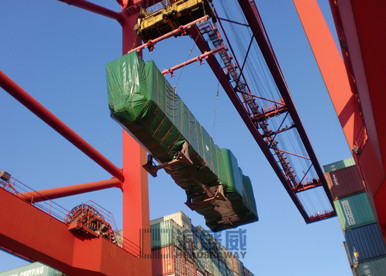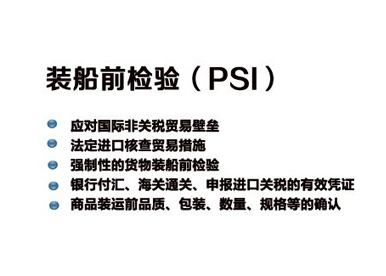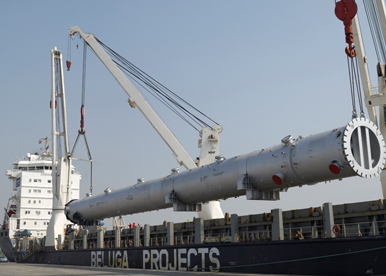(2) Classroom Knowledge on Maritime Import and Export - Document Section
In maritime practice, the production and issuance of documents usually involve exporters, inspection agencies in the exporting country, freight and shipping companies, as well as importers and inspection agencies in the importing country. It is generally stipulated that the documents are in English or in both Chinese and English.
Mainly including: contract, packing list, invoice, export customs declaration, inspection certificate, quality certificate, weight certificate, health certificate, bill of lading, insurance policy, certificate of origin, ship certificate, letter of credit, bill of lading, etc
CONTRACT
CONTACT is a general term that can be issued by both the buyer and the seller. If it is made by the seller, it can be called a Sales Confirmation, and the buyer can issue a Purchase Confirmation.
The contract must include elements such as the names and addresses of the buyer and seller, the signing time and location, the name of the traded goods, payment methods, and breach of contract liability. In addition, additional clauses can be added based on the characteristics of different products. Formal foreign trade contracts often have more detailed provisions, such as the requirements for opening a letter of credit under the conditions of a letter of credit, and the provisions for various force majeure; For bulk cargo such as minerals, agricultural by-products, etc. that are prone to shortages during loading, unloading, storage, and transportation, contracts often include "over loading and short loading" clauses.
In theory, a contract should be made in duplicate, with each party holding a signed and stamped original as proof. It is not strictly required to copy and execute in foreign trade practice, and a general fax copy is used as a memorandum. More reliance is still on commercial credit, as well as substantive control measures such as prepayments and letters of credit. The contract itself seems less important
。
PACKING LIST
The packing list corresponds to the foreign trade invoice and has the same nature. It is mainly used to indicate the packaging situation of the goods, such as product name, quantity, packaging method, gross weight, and volume. Depending on the product category, other detailed explanations such as net weight can also be added. The style is similar to the invoice, but there is no need to indicate the value of the goods. Usually, several original and duplicate copies are also required.
INVOICE
Invoice, also known as Commercial Invoice. The concept of "invoice" in foreign trade is completely different from domestic financial invoices. A foreign trade invoice is a document created and issued by the exporter themselves, which is used to explain the name, quantity, unit price, total value, and other information about the goods on this invoice. The invoice format is flexible, but it must include the above elements and be signed in full. The invoice must indicate an invoice number and the date of issuance. It is possible to make several copies as needed, consisting of several original and duplicate copies, which should be marked with the words "ORIGINAL" and "COPY".
The end of an invoice usually has E& O. E. The wording means "When there is an error, it should be checked", which means that this invoice can be modified if there are any errors or omissions.
The format of a formal invoice (PROFORMA INVOICE) is similar to that of a commercial invoice, and it is almost possible to directly transfer the commercial invoice and change the title to "PROFORMA INVOICE". The purpose of a formal invoice is to serve as a tool for quoting and determining transactions, similar to a unilateral contract. Some customers in certain countries prefer the form of "confirmed formal invoices" as contracts. Therefore, in addition to the same content as the commercial invoice, additional terms such as delivery time can be added in the blank space with a "REMARK" annotation as needed to further implement the transaction. In addition, for transactions that require import permits or foreign exchange usage limits, customers also need formal invoices to make preliminary applications. When using international express delivery for goods, it is also necessary to attach a formal invoice as a unified customs declaration for the courier company.
Export declaration
Fill out and submit to customs during export declaration. However, currently, except for large foreign trade companies or export enterprises, many exporters generally entrust freight forwarding companies to handle customs clearance matters together. The export declaration form consists of six copies: customs operation copy, customs retention copy, enterprise retention copy, customs verification copy, export receipt copy, and export tax refund copy. At present, various domestic customs have implemented paperless customs clearance, and export goods declaration information can be directly accessed by enterprises by logging into their electronic port cards.
Inspection certificate, quality certificate, weight certificate, hygiene certificate
Inspection Certificate, Quality Certificate, Weight Certificate, Health Certificate, etc
According to the different customs supervision conditions of the product country, and in accordance with national regulations or customer needs and industry habits, some commodity exports must be mandatory and issued inspection certificates by the National Inspection and Quarantine Bureau. According to the different inspection items, it is divided into quality certificate, weight certificate, hygiene certificate, etc.
BILL OF LOADING
A bill of lading is a certificate issued by the freight company after the goods are delivered to them, representing property rights and picking up the goods at the destination. The bill of lading is the core document, in a sense, it represents the value of the goods and the payment for the goods. According to different modes of transportation, it can be divided into Airwaybill (AWB), OCEAN Bill of Lading (B/L), and others.
The bill of lading is filled out by the freight company based on relevant data provided by the shipper, such as the name and address of the shipper and consignee, destination, and description of the goods. After confirmation by the shipper, it is signed and issued. In addition to the fixed columns on the bill of lading, the ocean bill of lading must also be marked with the words "ON BOARD DATE" when issued, which is the standard for calculating the actual delivery time
。
INSURANCE POLICY
Insurance policy: In order to prevent possible damage during international transportation of goods, traders usually purchase insurance for some high-value goods. The insurance company issues an insurance policy based on the type of insurance purchased, which serves as one of the cargo documents.
The types of marine cargo insurance are divided into two categories: basic insurance and additional insurance.
Basic insurance types: Free from Particle Average F.P.A, With Average or With Particle Average W.AorW.P.A, and All Risk A.R.
Additional insurance types: Additional insurance types include general additional insurance and special additional insurance. The expansion and supplementation of basic insurance liability cannot be insured separately.
There are generally 11 types of additional insurance, including Theft, Pilferage and Nondelivery T.P.N.D, FreshWater and/or RainDamage, RiskofShortageinWeight, Risk of Leakage, Risk of Intermixture and Contamination, Risk of Intermixture and Contamination, Risk of Intermixture and Contamination, Risk of Odor, and Sweating and Heat. Ting, HookDamageRisk, BreakageofPackingRisk, and RiskofRust.
Special additional insurance includes: FailuretoDeliverRisk, ImportDutyRisk, OnDeckRisk, RejectionRisk, AflatoxinRisk, Seller's ContentRisk, Fire Risk Extension for Storage of Exported Goods in Hong Kong or Macau, FireRiskExtentionClauseforStorage of Cargo of DestinationHongkongIncluding Kowloon, or Macau, and Ocean Shipping. OceanMarine CargoWarRisk, etc
。
Certificate of Origin
The certificate of origin includes the General Certificate of Origin (CERTIFICATION OF ORIGINA) and the Generalized System of Preferences Certificate of Origin (GSPFORMA).
A certificate of origin is a document that proves the place of production and manufacturing of exported goods, and is the "identity card" for exported products entering the international trade field. The importing country provides different tariff treatment and decides whether to impose restrictions on the imported goods based on this.
The certificate of origin in China has a fixed printing format and is generally issued by the commodity inspection bureau. To apply for this certificate, an export enterprise must first register the enterprise locally before being eligible to apply for a visa.
Generalized System of Preferences (GSP) is a universal, non discriminatory, and non reciprocal tariff preferential system granted by developed countries to developing countries for exporting manufactured and semi-finished products. The Generalized System of Preferences (GSP) certificate of origin is a document issued in accordance with the requirements of the beneficiary country, which can prove that the exported goods originate from the beneficiary country and enable the goods to enjoy universal preferential tariff treatment in the beneficiary country. Similarly, it is generally issued by the commodity inspection bureau. Export enterprises applying for this certificate at the commodity inspection bureau must provide necessary supporting documents and evidence to the local commodity inspection bureau. Firstly, they need to register the enterprise before applying for a visa.
The certificate of origin and the Generalized System of Preferences certificate can also be issued by trade promotion associations and chambers of commerce in various regions, with the same format but different seals
Shipping Company's Certificate
Shipping Company's Certificate, also known as "Ship Certificate" or "Ship Company Certificate", is a type of certification document required by the importing party to be provided by the beneficiary, issued by the shipping company or its agent, to explain the vessel's nationality, age, voyage, and other contents.
Letter of Credit
The settlement method is based on a letter of credit. After the letter of credit is issued and reaches the bank of the exporter (beneficiary of the letter of credit), the bank will notify and submit the letter of credit along with the notification to the exporter.
bill
The timely confirmation of bills for each link (except for special events) after confirming the timely import and export of goods is the basis for cost and profit control in maritime transportation business. Although this stage has come to an end, its importance cannot be underestimated.
Ranking of similar articles
- 深圳口岸经营服务企业收费公示单
- 巴拿马运河下月将迎来最大集装箱船
- 全球船厂手持订单量大幅下降
- 四大航运巨头组建数字集装箱航运联盟
- 油船市场将成限硫令的大赢家
- 菲律宾港口巨头或将收购韩进苏比克
- 太古轮船完成收购汉堡南美集团散货业务
- 深圳海盛威物流周刊(2019-3-20)
- 全球首艘极地凝析油轮在广州南沙命名
- 出口值122亿元 舟山外贸出口商品货值“老大”易主
Latest news articles
History









